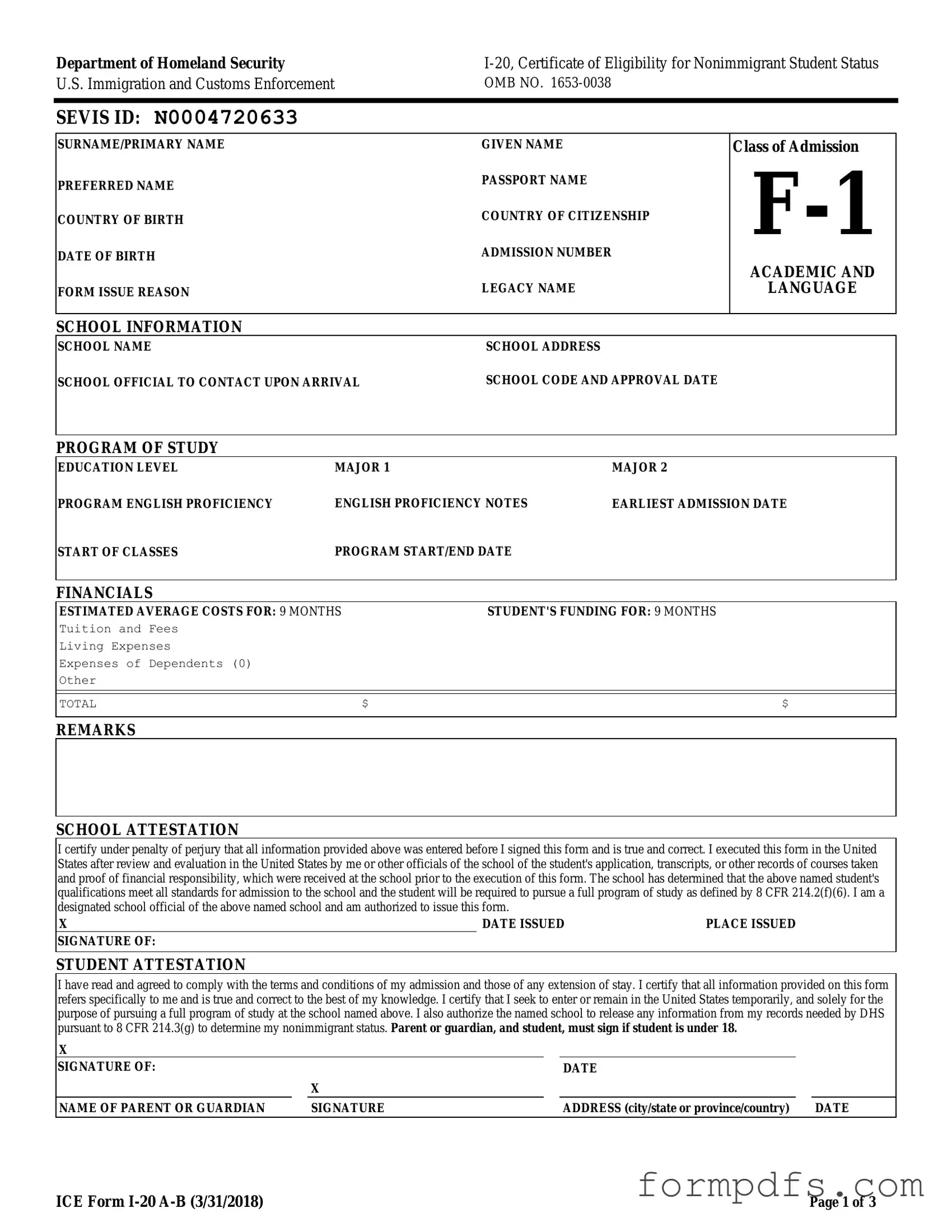What is the I-20 form?
The I-20 form, officially known as the Certificate of Eligibility for Nonimmigrant Student Status, is a crucial document issued by U.S. schools to international students. It certifies that a student has been accepted into a full-time academic program and is eligible to apply for a student visa. The I-20 contains important information such as the student's personal details, program of study, and financial information, which are essential for obtaining a visa and entering the United States.
How do I obtain an I-20 form?
To obtain an I-20 form, you must first apply and be accepted to a Student and Exchange Visitor Program (SEVP)-certified school in the United States. Once accepted, the designated school official (DSO) at that institution will prepare the I-20 for you. You will need to provide documentation proving your financial ability to support yourself during your studies, as well as other necessary personal information. After the DSO issues the form, you will receive it to use for your visa application.
What should I do if I lose my I-20 form?
If you lose your I-20 form, it is important to act quickly. You should contact the designated school official (DSO) at your school immediately to request a replacement. The DSO will verify your status and issue a new I-20 form, which you must keep with you at all times while in the United States. It is crucial to have this document for various legal and academic purposes.
What is the significance of the SEVIS ID on the I-20 form?
The SEVIS ID, which is a unique identification number assigned to you within the Student and Exchange Visitor Information System, is vital for tracking your status as an international student. It allows U.S. immigration officials to access your records and monitor your compliance with visa regulations. You will need to provide this ID when applying for your visa and during your stay in the United States.
Can I work while on an I-20?
Yes, as an F-1 student, you may work under certain conditions. On-campus employment is generally permitted without prior authorization. However, for off-campus work, you must obtain written permission from your DSO and may need to apply for additional authorization from U.S. Citizenship and Immigration Services (USCIS). It is essential to understand the regulations surrounding employment to maintain your student status.
What happens if my program end date on the I-20 form approaches?
As your program end date approaches, it is important to assess whether you will complete your studies on time. If you find that you need more time to finish your program, you must contact your DSO at least 15 days before the end date to request an extension. If you do not take action, your F-1 status may be terminated, which could lead to complications regarding your stay in the United States.
What should I do if I want to transfer to another school?
If you wish to transfer to another school, you must first notify your current DSO of your intention. After that, you will need to obtain a new I-20 form from the DSO at the school you plan to attend. It is important to complete this process within 15 days of starting at the new institution. Your new school will then update your records in the SEVIS system to reflect the transfer.
How do I maintain my F-1 status while studying in the U.S.?
To maintain your F-1 status, you must comply with several key requirements. These include remaining enrolled as a full-time student, engaging only in authorized employment, and keeping your passport valid. It is also crucial to report any changes in your address or program to your DSO promptly. Failure to adhere to these regulations can jeopardize your student status and may lead to deportation.
